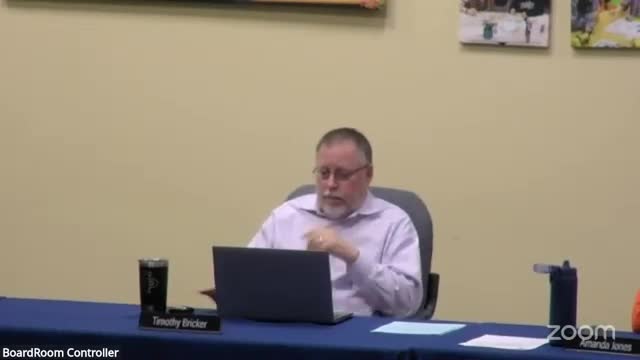Lower Gwynedd School District approves $370K chiller sound control wall project
May 04, 2025 | Wissahickon SD, School Districts, Pennsylvania
This article was created by AI summarizing key points discussed. AI makes mistakes, so for full details and context, please refer to the video of the full meeting. Please report any errors so we can fix them. Report an error »

In a recent work session held by the Wissahickon School District, board members gathered to discuss the pressing issue of sound control related to the district's chiller system. The meeting, which took place on May 4, 2025, revealed significant concerns about the costs and implications of a new sound barrier project aimed at mitigating noise complaints from nearby residents.
As discussions unfolded, it became clear that the projected cost of the sound control wall was much higher than anticipated, raising questions about the factors contributing to this increase. Board members speculated whether current tariffs and supply chain issues were driving up prices, particularly given the complexities surrounding the installation of the wall. An underground storage tank near the chiller complicated the project, necessitating a more expensive wall structure than initially planned.
The board learned that the chiller currently exceeds local sound ordinances by 1 to 4 decibels during certain hours, a situation that could lead to fines if not addressed. The proposed wall, standing 14 feet high, is expected to reduce noise levels significantly, potentially bringing them below the ordinance threshold. However, concerns lingered about whether the wall would adequately satisfy community expectations for noise reduction.
Members expressed frustration over the financial implications of the project, emphasizing the need to balance capital expenditures with educational priorities. The funds for the wall are drawn from a separate capital budget, ensuring that educational resources remain unaffected. Yet, the board grappled with the challenge of ensuring that the investment leads to a satisfactory outcome for the community.
As the meeting progressed, questions arose about the accountability of contractors should the wall fail to meet sound reduction expectations. While the acoustic experts expressed confidence in the design, board members sought assurances that the district would not bear additional costs if the project did not deliver the promised results.
In conclusion, the Wissahickon School District faces a critical decision regarding the sound control wall project. With community satisfaction and financial prudence at stake, board members are tasked with navigating the complexities of construction, compliance, and community relations. As they move forward, the hope is that the investment will not only meet regulatory standards but also foster a harmonious relationship with the surrounding neighborhood.
As discussions unfolded, it became clear that the projected cost of the sound control wall was much higher than anticipated, raising questions about the factors contributing to this increase. Board members speculated whether current tariffs and supply chain issues were driving up prices, particularly given the complexities surrounding the installation of the wall. An underground storage tank near the chiller complicated the project, necessitating a more expensive wall structure than initially planned.
The board learned that the chiller currently exceeds local sound ordinances by 1 to 4 decibels during certain hours, a situation that could lead to fines if not addressed. The proposed wall, standing 14 feet high, is expected to reduce noise levels significantly, potentially bringing them below the ordinance threshold. However, concerns lingered about whether the wall would adequately satisfy community expectations for noise reduction.
Members expressed frustration over the financial implications of the project, emphasizing the need to balance capital expenditures with educational priorities. The funds for the wall are drawn from a separate capital budget, ensuring that educational resources remain unaffected. Yet, the board grappled with the challenge of ensuring that the investment leads to a satisfactory outcome for the community.
As the meeting progressed, questions arose about the accountability of contractors should the wall fail to meet sound reduction expectations. While the acoustic experts expressed confidence in the design, board members sought assurances that the district would not bear additional costs if the project did not deliver the promised results.
In conclusion, the Wissahickon School District faces a critical decision regarding the sound control wall project. With community satisfaction and financial prudence at stake, board members are tasked with navigating the complexities of construction, compliance, and community relations. As they move forward, the hope is that the investment will not only meet regulatory standards but also foster a harmonious relationship with the surrounding neighborhood.
View full meeting
This article is based on a recent meeting—watch the full video and explore the complete transcript for deeper insights into the discussion.
View full meeting